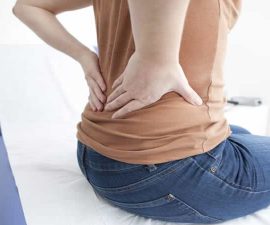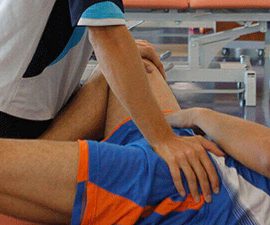Though pain is a normal part of your life, sometimes it may signal that something goes awry – especially if it becomes chronic and lasts longer than expected. Chronic pain that comes and go can be caused by a number of different ailments from mild to serious. How about hernia pain? How does it feel like?
Hernia overview
In basic terms, hernia is a condition in which you have a weakened spot or hole in the wall of your abdomen and then something (the abdominal tissue for example) protrudes. A portion of abdominal tissue or intestine that protrudes may form a protrusion (bulge), which is usually the main symptom of hernia.
The cause can vary. Many times hernia occurs with age, because the abdominal muscles can gradually weaken over time. Though each case is different, it is more likely to occur when your abdomen is often under higher than usual pressure, such as if:
- You are obese.
- You are pregnant.
- You often do heavy lifting.
- You have chronic constipation.
- You have chronic cough.
Other times, hernias occur with congenital factor – some people are born with weak abdominal wall. Also, it’s quite common in people who have had surgery in the abdominal area.
Types of hernia
In general, it’s classified by where it occurs (location). Some of the common ones are as follows:
- Inguinal hernia, occurring when tissues or organs push through a weakened spot close to the inguinal canal (in the inner groin). It is the most common type of hernia, especially in men. Typically, it occurs because of a natural weakness in the abdominal muscles near the inguinal canal.
- Incisional, a condition of when abdominal tissue or bowel protrudes through a spot weakened by a surgical procedure or an area where previous trauma has occurred.
- Hiatal, a protrusion in the upper stomach that comes up through the hiatus in the diaphragm (see more in here).
- Femoral hernia. As the name suggests it protrudes through the abdominal cavity at the femoral canal (on the outer groin). It is generally more common in women.
- Umbilical, a protrusion that occurs in the naval (belly button). This type usually affects newborns.
Strangulated hernia
At early stages of the disease, it’s usually easy to gently push the bulge back into the abdominal cavity – especially when you are lying down. This phase is called reducible hernia. But over time, it may get bigger and more difficult to be popped back with manual pressure.
When the hernia contents resists manual pressure, this may signal that they are incarcerated (trapped). This phase is also called non-reducible hernia.
Incarcerated hernia will cause further swelling and even strangulation, an emergency condition that cuts off the blood flow to the affected area and results in tissue death. The death tissue of your intestine or bowel will release toxins into the circulation (bloodstream). If not immediately treated, you can have blood poisoning (septicaemia) and ultimately death.
Does hernia pain come and go?
It’s normal to have pain when you accidentally hit your thumb, break your leg, or when your hands touch a hot plate. That’s a good pain because it tells you that your body is going with an injury so you have an alert to respond quickly. In such a case, the pain will stop when the injury heals.
But sometimes pain can become chronic. It may come and go – also last for weeks, months, or even years. Chronic pain is usually associated with particular health conditions such as arthritis, fibromyalgia, diabetes, and more. How about hernia?
Is hernia pain constant or intermittent?
At first, the pain may come and go (particularly if the hernia is still small or mild) – or sometimes there is no true pain upon examination. Typically, the symptoms (including the bulge and pain) are more noticeable when you have any activities or particular postures that cause more pressure in the abdomen – such as straining, lifting heavy objects, walking, coughing, or standing.
On the other hand, the symptoms will improve when the pressure in the abdomen decreases. For example, the bulge usually disappears or gets smaller in size when lying down. The same goes for the pain, it usually also get better when there is no pressure that pushes the abdominal tissue through the hole.
As the problem progresses, the contents of hernia may become incarcerated (trapped) – they don’t easily fall back into the abdominal cavity even though when lying down or with manual pressure. An incarcerated hernia can be more painful. It may also cause constipation /bowel obstruction, nausea, and vomiting.
In the worst scenario, incarcerated hernia leads to strangulation. The pain of strangulated hernia can be constant and rapidly become severe. Typically, it will not relieve without attention by a suitable physician or surgeon.
Since this strangulation is very dangerous, be especially alert when you have some of the following warning signs and symptoms:




